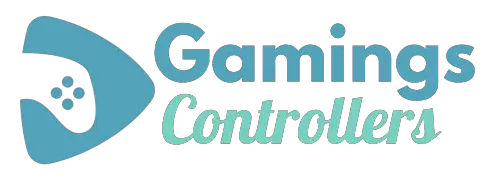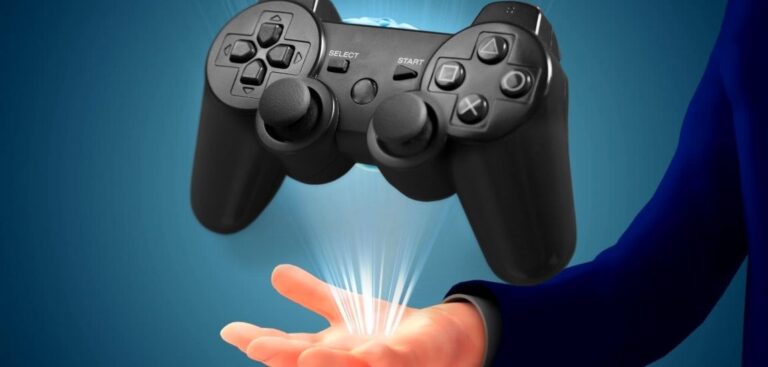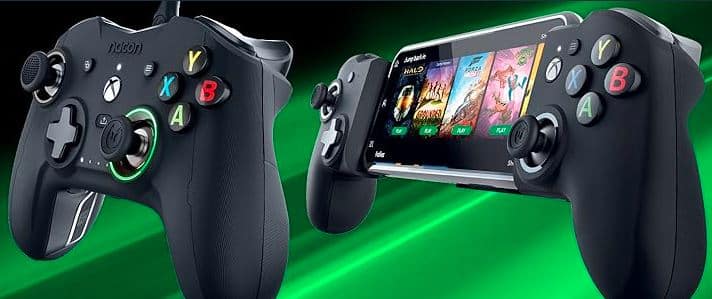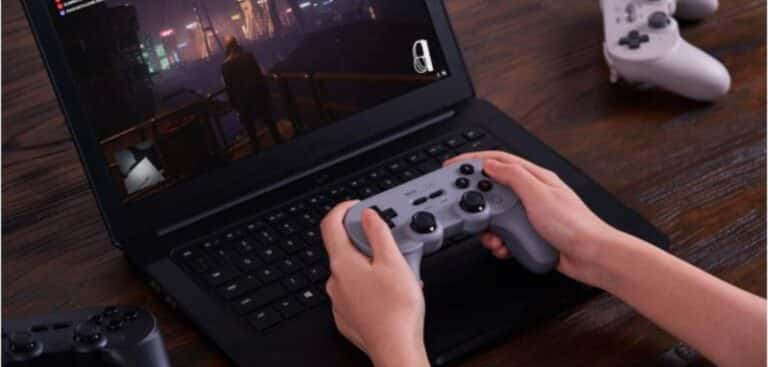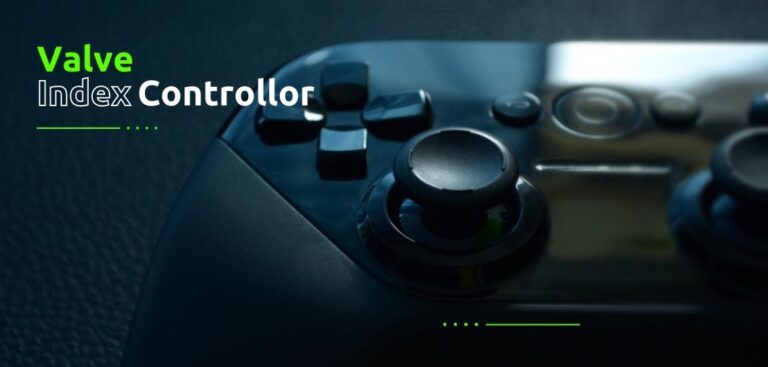How Do Check If The Nintendo Switch Pro Controller is Original?
Gaming enthusiasts know that having the right controller can make all the difference during intense gaming sessions. The Nintendo Switch Pro Controller is a popular choice for its ergonomic design, button layout optimized for long hours of play, and smooth, responsive controls. However, the popularity of the Switch Pro Controller has led to an influx of counterfeit controllers in the marketplace. These fake controllers mimic the design of the original but lack the performance and build quality of genuine Nintendo controllers. They often break easily or have unresponsive buttons and joysticks. That’s why it’s crucial to verify that your Pro Controller is an authentic, licensed Nintendo product before purchasing. A fake Pro Controller can negatively impact your gaming experience. This guide will arm you with the knowledge to spot how to check if the Nintendo Switch Pro controller is the original.
Why Controller Authenticity Matters
Nintendo designs its controllers to particular standards. The materials, circuitry, buttons, joysticks, and other components are engineered to provide a seamless, reliable gaming experience.
- The analog sticks on official Pro Controllers provide precision movement and control thanks to high-quality sensors. Counterfeit sticks often have dead zones or drift issues.
- The buttons feel snappy and responsive. Fake controllers sometimes have buttons that stick or don’t have a crisp click.
- Build quality is solid and durable. Fake plastic feels light, brittle, and cheap.
You also miss out on cool features like HD rumble, motion controls, and Amiibo support found in licensed Pro Controllers.
Beyond performance, genuine controllers are covered by Nintendo’s warranty and customer service. If you run into technical issues down the road, you have recourse to get a replacement or repair.
Counterfeit controllers provide a subpar experience and break easily under heavy usage. Their shoddy craftsmanship can also damage your Switch console itself in some cases. Avoid wasting money on fake controllers that ruin your gaming time!
How Counterfeit Controllers Enter the Marketplace
Fake Pro Controllers have flooded online marketplaces and auction sites. Some counterfeits try to mimic the Pro Controller design exactly. More commonly, they reuse the shell and casing but install lower-grade internals.
The rise of third-party accessory manufacturers has also led to “knock-off” designs sold under different brand names. While not outright counterfeits, these controllers cut corners that negatively impact performance.
Other fake controllers disguise themselves as special editions like translucent or brightly colored themes not released officially by Nintendo.
Being aware of how counterfeiters sneak their products to consumers can help you scrutinize your purchase more closely. Always exercise caution when buying from unofficial third-party sellers online.
1. Examining the Packaging
Your first clue to spotting a counterfeit controller is to inspect the packaging.
What to Look For in Official Nintendo Packaging
- The Nintendo Switch logo is displayed prominently on the front
- Model number HAC-A-ACC(JPN/USA/EUR)-01 printed on the box
- High-resolution graphics and text on the packaging
- Packaged in a full-color retail box
Warning Signs of Potential Fakes
- Cheap, flimsy clamshell packaging instead of a sturdy box
- Pixelated or blurry images on the packaging
- Identical packaging and model numbers across different controller colors
- Disclaimers like “Not endorsed or licensed by Nintendo” in small text
- Scrapes, dents or shrink wrap in poor condition
While packaging is not foolproof, it’s often the first red flag to study closely.
2. Physically Inspecting the Controller
Once you have the controller in hand, a careful inspection can help confirm whether you received a real Nintendo product or a knock-off.
Build Quality Differences
Genuine Nintendo controllers feature excellent build quality and durable materials.
- The outer plastic shell feels dense and rigid in your hands, not light or hollow
- Buttons have a matte finish and click satisfyingly when pressed
- Joysticks are sturdy and don’t wiggle around loosely
- The USB charging cable is high-quality and adequately long
Meanwhile, fake controllers tend to cut corners:
- Lightweight plastic that bends easily under pressure
- Loose joysticks with a lot of play when you move them
- Buttons that get stuck or don’t pop back up instantly
- A thin, short charging cable that feels flimsy
Subpar molding on counterfeits means you may spot gaps, air bubbles, or rough edges around buttons. Fakes also lack the smooth rubberized grip on the underside.
Comparing Buttons and Joysticks
Nintendo’s signature button shapes, embossed lettering, and responsiveness set their controllers apart.
- Press each button and toggle the joysticks, testing for any stickiness or lag
- Buttons should quickly snap back into place when released
- Joysticks should glide smoothly without catching or rubbing
- Listen for a clean, crisp click when pressing buttons
On fakes, the letters are sometimes misaligned or have typos. You may hear muted, squishy clicks instead. Joysticks can grind, squeak, or feel loose.
Connecting to Joy-Cons
Another test is to connect the Pro Controller to a Joy-Con grip accessory. On real Pro Controllers, the railings perfectly match and interlock with Joy-Cons.
Fakes often don’t align correctly, indicating their mold differs from Nintendo’s specifications.
3. Researching the Seller
A reputable seller that provides documentation goes a long way in verifying authenticity.
Buying From Trusted Sources
Your safest bet is to purchase your controller directly from major retailers like Amazon, Target, or GameStop. These sellers acquire their inventory directly from Nintendo.
If buying from third-party Marketplace sellers, thoroughly vet their ratings and reviews first. Be skeptical of new sellers with no history.
Evaluating eBay and Auction Sites
Use extra caution when buying from independent eBay sellers. Telltale signs of counterfeit listings include:
- Prices that seem too good to be true
- Stock photos instead of images of the actual controller
- Misspellings in the listing title
- Low seller feedback scores or ratings
Ask the seller questions before bidding:
- Do they have receipts or proof of authenticity?
- Would they accept a return if it’s not genuine?
- Why are they selling brand-new controllers below retail value?
Avoid sellers who seem evasive or unwilling to back up their legitimacy.
4. Comparing Against Other Switch Controllers
If you already own other licensed Switch controllers, do side-by-side comparisons.
Contrasting with Joy-Cons
Compare your Pro Controller with the Joy-Cons that came with your Switch console.
- It should have the same glossy finish and plastic quality
- Buttons and joysticks should have a nearly identical feel
- The railings match perfectly so they can attach
Noticeable differences in materials, finish, or alignments indicate a fake.
You can also connect the Pro Controller to the Switch to check button responsiveness and joystick control in games. Try moving and pressing buttons through some game menus.
Cross-Checking Other Models
If possible, contrast your controller against a different Switch model like the Split Pad Pro or another Pro Controller.
- The molding should align cleanly when attached
- Buttons, joysticks, and D-pads should move and click similarly
- Features like amiibo support, HD rumble, and gyro controls function the same
This helps you benchmark against a known-good controller.
Key Takeaways to check if the Nintendo Switch Pro controller is original
- Carefully inspect the packaging for signs of a counterfeit
- Check molding quality, buttons, sticks, and grip for build issues
- Evaluate seller reputation when buying from third parties
- Compare control feel against official Joy-Cons and Pro Controllers
- Test buttons, motion controls, and rumble features for performance
- Avoid “too good to be true” deals and unvetted sellers
- Purchase from reputable major retailers whenever possible
FAQ check if the Nintendo Switch Pro controller is the original
How can I tell if a controller is fake before buying it online?
Scrutinize high-resolution photos in the listing for signs of low-quality materials or molding defects. Ask the seller detailed questions about authenticity guarantees before bidding or buying.
What should I do if I receive a fake Pro Controller in the mail?
First, double-check for the signs outlined in this guide. If you can confirm it’s counterfeit, contact the seller immediately for a refund. Report the listing and file a complaint if they refuse.
Can fake Pro Controllers damage my Nintendo Switch console?
In rare cases, very poor-quality fake controllers may fry the electronics in your Switch if they have wiring issues. Using counterfeits also voids your console warranty.
I accidentally bought a counterfeit controller. Can I get a refund?
If purchased through a major retailer like Amazon, you can likely return for a refund.
Conclusion About checking if the Nintendo Switch Pro controller is original
Authenticity is crucial for your Nintendo Switch Pro Controller. By examining packaging, scrutinizing physical features, and researching the seller, you can ensure a genuine gaming experience, free from the hassles of fake controllers. Your gaming adventures deserve the real deal, so invest wisely in your gaming gear.
Last Updated on 28 January 2024 by Ray Imran

Author Fajar Tariq’s gaming controllers offer diverse input options for video games, enhancing user experience and accessibility. From traditional gamepads to innovative hands-free and VR controllers, they cater to various needs and preferences in gaming.
